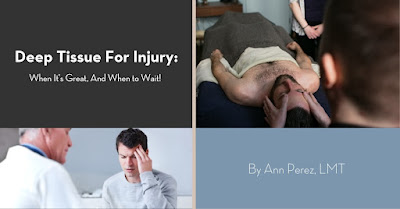1. Use
self-massage
If
you’re experiencing neck or back pain during your flight, you can also try
giving yourself a massage. An easy way to do this is to pack a tennis ball in
your carry-on and use it to massage your shoulders and between your lower back
and the seat. A tennis ball is all you need to really loosen up your muscles.
Many airports offer massages, and it can be tempting to get one before a
flight. However, this will only help a bit at the beginning of the flight and
disappear by the end of it. Instead, try
getting a professional massage the evening that you land.
You’ll wake up refreshed and ready!
2.
Try to sleep in a natural position
It
can be difficult to stay comfortable during your flight. Try not to twist or
contort your body as you’re looking for a good position to rest. As much as you
can, sit with your seat reclined and your body aligned. Here’s where a neck
pillow can really help to keep your spine straight and forward as much as
possible.
3. Order
your favorite beverage and snack
Stay
relaxed by ordering your favorite beverage and snack, so that you can enjoy the
flight. Stress can be a major factor when it comes to back pain, so do whatever
stress-free activities you like. Stay relaxed, watched a movie, enjoy a snack –
whatever makes you feel comfortable.
4. Upgrade
to first class
If
you’re really struggling with pain on a flight, you can also try to get
upgraded to first class, where the seats are wider and more comfortable. You
can do this by using your airline points, paying more or bringing a doctor’s
note that explains your back condition. Find a way to get a more comfortable
seat. Sometimes the investment of first class can make a huge difference to
your pain.
5. Stay
hydrated throughout your flight
It’s
easy to get dehydrated on a flight. Be sure to ask for water, or bring an empty
water bottle through security to later fill with water. For a long flight, it’s
important to continue to drink fluids. This will prevent your muscles from
getting stiff or tense during those long hours.
For your next flight, follow these nine
tips to keep your neck and back pain away. If you struggle with neck and back
pain on a regular basis, you should also consider seeing a chiropractor.
A chiropractic clinic can give you professional medical advice about whether
you need an adjustment, as well as creating a care plan that involves massage,
diet, exercise, and supplements. Don’t just cross your fingers that your pain
will go away, make an appointment before your upcoming trip.
If your trip takes you to New York City,
book a professional deep tissue massage in Midtown or the Financial District
with a highly trained massage therapist at Bodyworks DW Advanced Massage
Therapy.


















